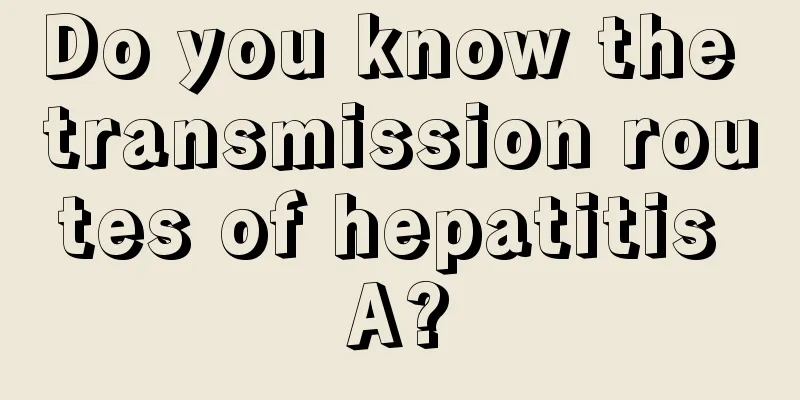How long can an esophageal stent be used

|
The esophagus plays an important role in the human digestive system, and esophageal cancer is a relatively serious cancer among digestive system diseases. When patients are diagnosed with esophageal cancer, most of them need to undergo esophagectomy to prevent the spread of cancer cells. After esophagectomy, an esophageal stent needs to be installed to maintain the patient's normal esophageal function. How long will an esophageal stent generally last? How long an esophageal stent can last varies from person to person. Different patients and different conditions have different maintenance times, but as for the stent, because it is made of nickel-titanium alloy, the stent itself is permanent, but how long it can last and how long it can be effective depends on how quickly the disease progresses. If the stent is placed and follow-up treatment is provided, the stent can last for a long time. As long as the disease is under control, the stent will continue to work. Most patients will experience stenosis again after stenting. For example, when fighting against malignant tumors, the tumor continues to progress and blocks the stent again, or the disease progresses again, causing stenosis again in places that were not stenotic before. The stent can work for life, but the length of time it lasts depends on how quickly the disease progresses. Therefore, it is recommended that after the stent is placed, follow up with the treatment of the primary disease. If the primary disease is not treated, the stent may only last for 2-3 months at the shortest. The longest is more than half a year, 7-8 months. In most cases where follow-up treatment is maintained, this can continue to work for several years. How is stent surgery for esophageal cancer performed? 1. Preoperative preparation: fasting for more than 8 hours, local anesthesia of the pharynx 20 minutes before the operation, and intramuscular injection of 10 mg each of diazepam and 654-2 to calm the nerves and reduce secretion. 2. Instruments used: electronic gastroscope or fiber gastroscope, X-ray machine, guide wire, conical silicone dilator with diameters ranging from 0.5 to 2 cm, esophageal metal stent and its installation system. 3. Operation steps: ① Positioning and selection of stents: The length and location of esophageal stenosis can be determined by understanding the length and location of esophageal stenosis based on preoperative X-ray films, or by observing the starting and ending points of the stenosis under direct gastroscopy. The length of the stent is selected based on the length of the stenosis, with 2 to 3 cm added to each end. ② Dilate the narrow area: first perform a gastroscopy to find the narrow opening, insert the guide wire from the gastroscopic biopsy forceps channel, pass through the narrow area to the gastric cavity, and then cooperate with the doctor to slowly withdraw the gastroscope while leaving the guide wire in place. Select a dilator of appropriate thickness and pass it along the guide wire through the narrow area, from small to large until a 12.8mm or 14mm dilator is passed. ③Stent placement: After correct positioning, withdraw the gastroscope and insert the stent installation system through the guide wire, with the narrowest point as the midpoint. After the position is correct, open the safety valve and withdraw the protective shell. At this time, the outer shell dissolves upon encountering mucus, and the stent begins to expand on its own. After understanding what esophageal stent surgery is, you can perform it with confidence. However, before performing the surgery, the patient's mood must be adjusted. A bad mood will also affect the surgery. Also, the patient should not be nervous. This is something that should be noted. |
<<: Can the tongue grow longer the day after tomorrow
>>: Is esophageal bleeding serious?
Recommend
Can liver cancer patients eat walnuts? It is recommended to know these before eating walnuts for liver cancer
Liver cancer can be caused by many reasons. Gener...
Barley and Fruit Soup
When the human body has too much moisture, the bo...
Signs that your baby needs complementary food
Many mothers may not know when their baby can sta...
Is there a relationship between kidney stones and gout
Not only is kidney stones a very common disease, ...
The efficacy and function of vinegar foot bath
Vinegar is a condiment used for cooking. It taste...
These are the symptoms of HPV infection
The hpv virus is a common sexually transmitted di...
What should we pay attention to in preventing lung cancer? Pay attention to these 5 aspects in preventing lung cancer
Experts say: For lung cancer prevention, we shoul...
Which parts should be massaged if you often have tinnitus?
Tinnitus and deafness are indirect occurrences in...
What is the difference between homing pigeons and meat pigeons?
People usually stew pigeon soup to eat. Pigeon so...
What causes nasopharyngeal cancer
Many people will have nasopharyngeal cancer in li...
What are the commonly used first aid methods for sports injuries?
There are more and more people who like sports, i...
What is cardamom
What is cardamom? This question puzzles many frie...
The dangers of laser mole removal
Does laser mole removal really work? People nowad...
Is stage 3 nasopharyngeal carcinoma serious? How to treat it?
Is stage 3 nasopharyngeal cancer serious? How is ...
Is it good to drink milk before going to bed every day?
Milk is the most consumed beverage in our lives. ...









